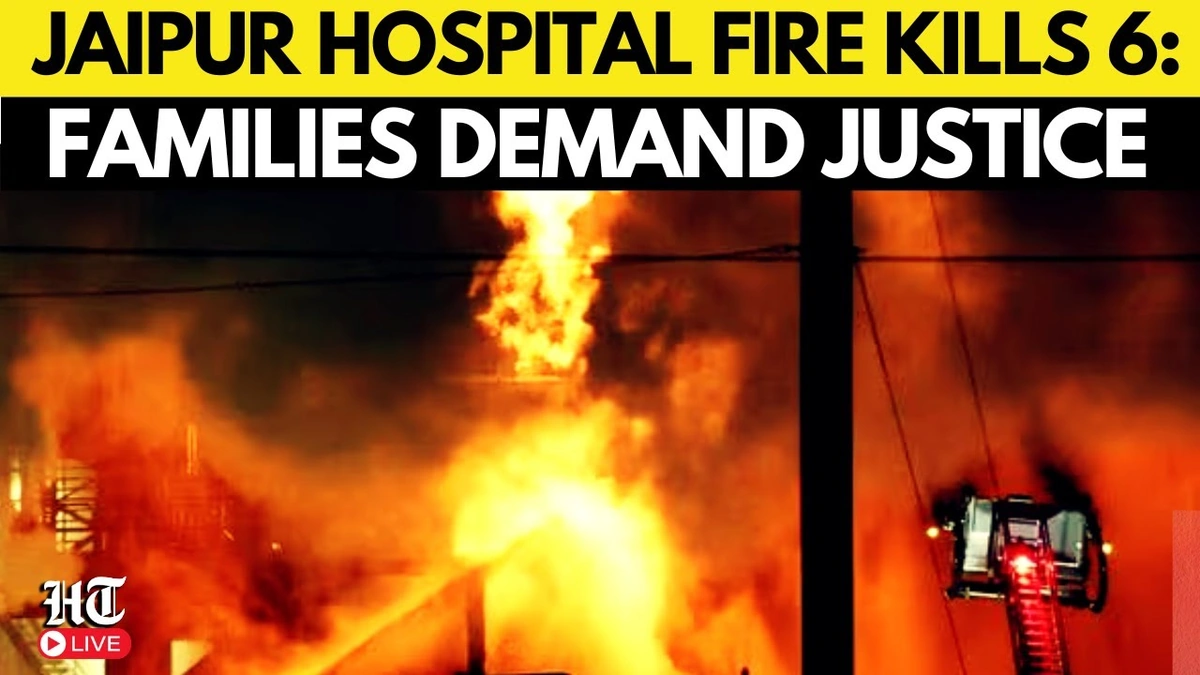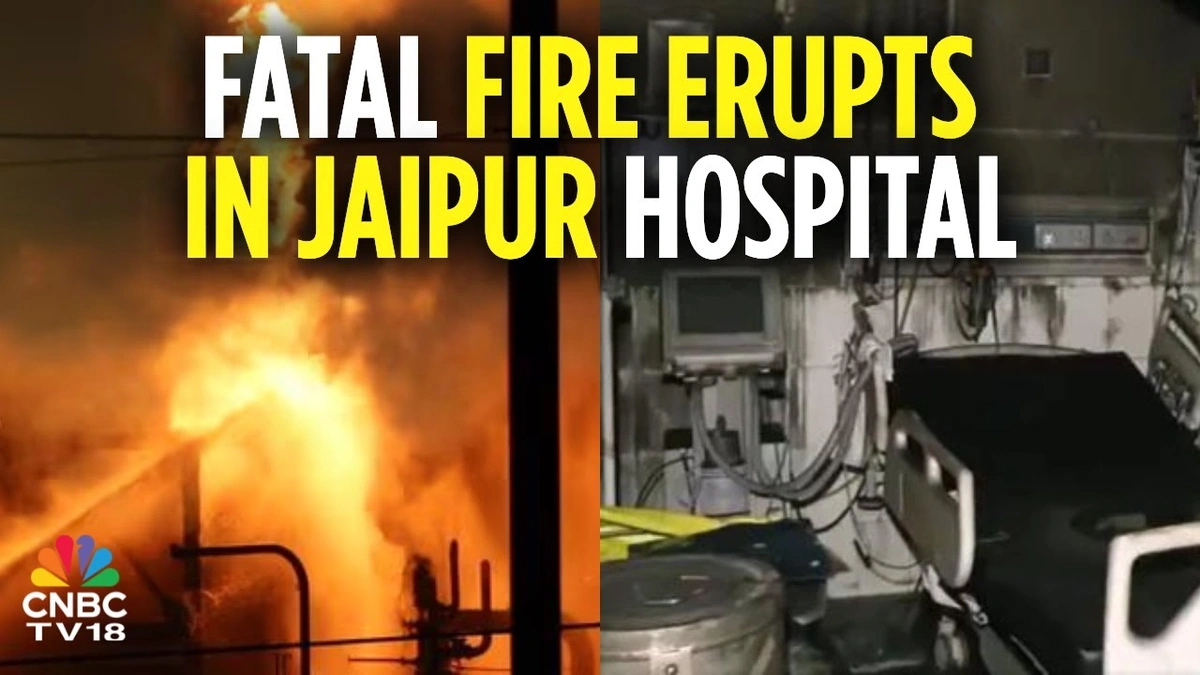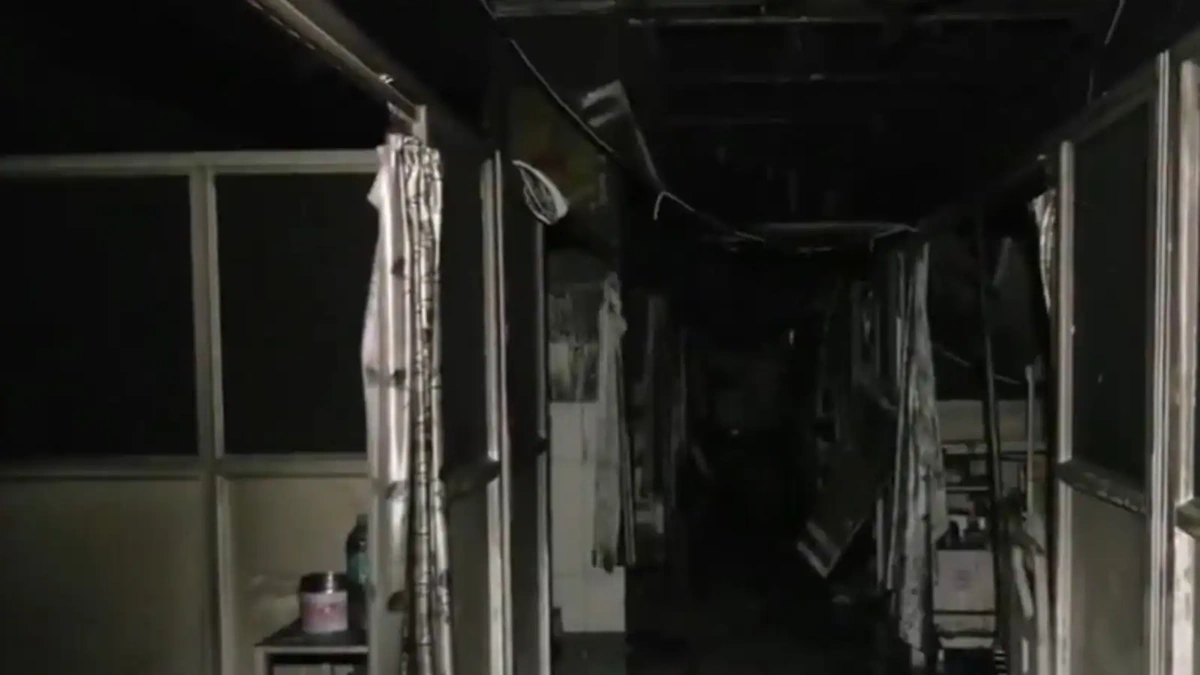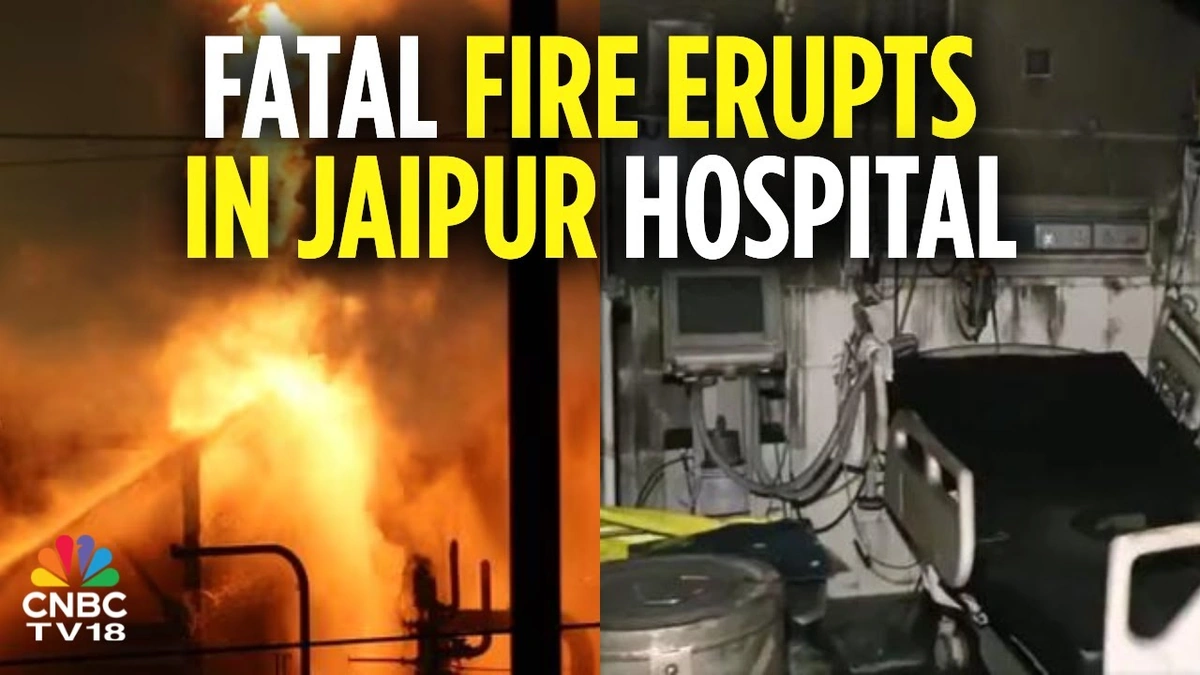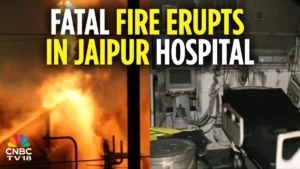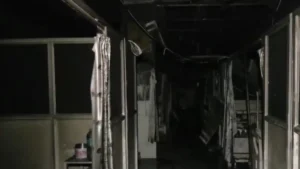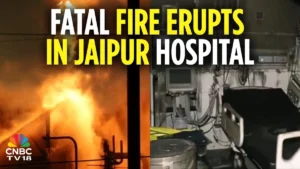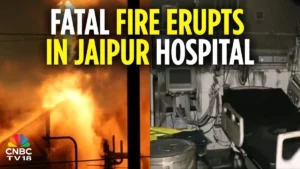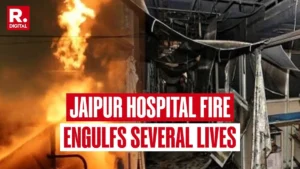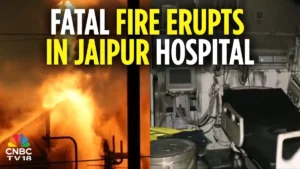7 Killed in Jaipur Hospital ICU Fire at SMS Hospital Trauma Center
The news hit like a punch to the gut: seven lives lost in a fire at the SMS Hospital Trauma Center in Jaipur. It’s the kind of headline that stops you in your tracks, makes you think about your loved ones, and frankly, leaves you feeling a little uneasy. Tragedies like the Jaipur hospital fire always demand answers, and while initial reports focus on the ‘what’ and ‘where,’ it’s the ‘why’ that keeps me, and probably you, up at night. What went wrong? And more importantly, what can be done to prevent something like this from happening again?
The Immediate Aftermath | More Than Just Numbers
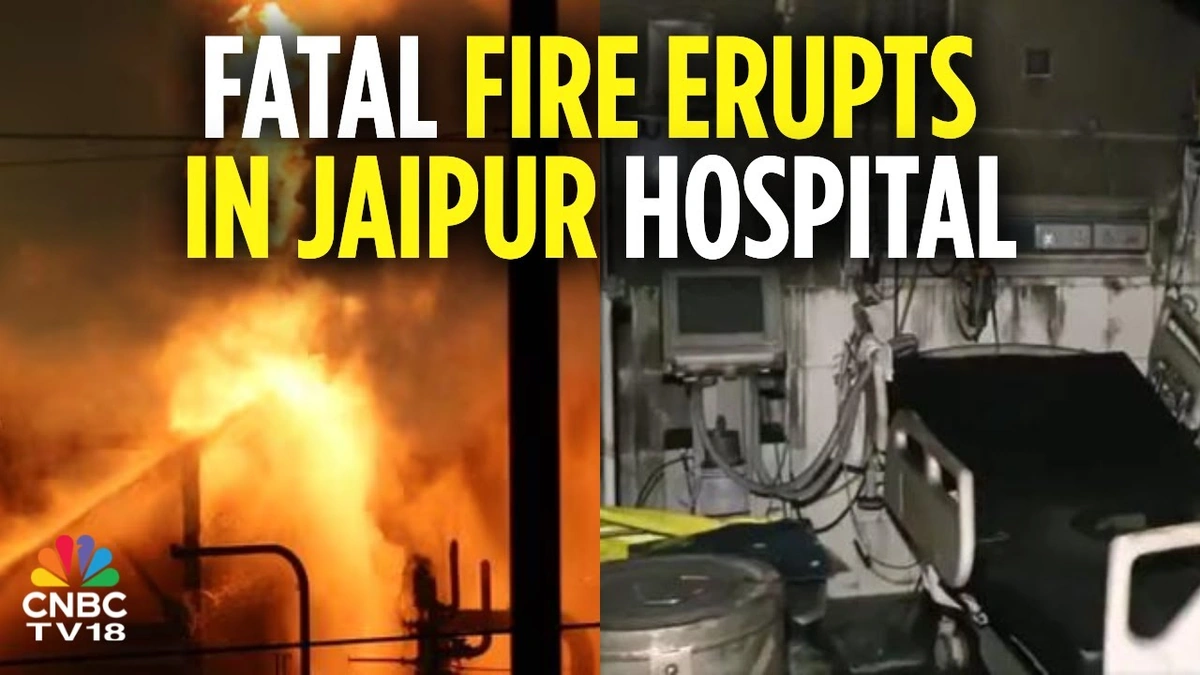
Let’s be honest, news reports often reduce such events to statistics – seven dead, X injured. But behind each of those numbers is a person, a family, a story cut short. The SMS Hospital fire is a stark reminder of the fragility of life and the critical importance of safety in healthcare facilities. Initial investigations point towards a possible short circuit as the cause, but that’s just scratching the surface. We need to delve deeper.
Think about it: a hospital ICU is where the most vulnerable patients are treated. They’re often immobile, heavily medicated, and completely reliant on the staff and the infrastructure around them. When a fire breaks out, their chances of survival plummet dramatically. That’s why fire safety protocols in hospitals need to be not just good, but flawless. It’s not enough to have fire extinguishers; there needs to be a culture of prevention, constant vigilance, and rapid response.
The news is filled with stories of heroism, of nurses and doctors risking their lives to evacuate patients. But these are the exception not the rule and the system needs to have a plan for when heroes are in short supply.
Digging Deeper | Systemic Failures or Unforeseeable Accident?
Here’s the thing: fires in hospitals, sadly, aren’t new. They happen with alarming regularity across India and the world. So, is this simply a tragic accident, or does it point to deeper, more systemic issues? I initially thought this was a simple case of negligence, but the more I looked into it, the more I realized it’s a complex web of factors at play. It’s vital to understand what the fire safety regulations are and how this hospital was adhering to them.
One key area to examine is the state of electrical infrastructure in older hospitals. Many of these facilities are decades old, with wiring systems that are outdated and overloaded. Regular maintenance is crucial, but often overlooked due to budget constraints or sheer bureaucratic inertia. Were there recent electrical inspections at SMS Hospital? Were any potential hazards identified and addressed? These are questions that need to be answered transparently.
Another factor to consider is the availability of trained staff and functioning equipment. Are nurses and doctors adequately trained in fire safety procedures? Are there enough fire extinguishers, smoke detectors, and sprinkler systems in place? And, crucially, are these systems regularly tested and maintained? According tothe National Disaster Response Force (NDRF) website, mock drills and training programs are essential for disaster preparedness. But how often are these conducted in reality, and are they truly effective?
The Human Cost | Beyond the Headlines
It’s easy to get lost in the technical details and bureaucratic jargon, but let’s not forget the human cost of this tragedy. Seven families are now grieving the loss of their loved ones. Spouses, parents, children – their lives have been irrevocably altered. The hospital fire victims deserve more than just a passing mention in the news; they deserve justice. Their families are likely asking questions like: What happened? Could this have been prevented? And what will be done to ensure that no other family has to endure this pain?
What fascinates me is how quickly we move on from these tragedies. The news cycle churns, and another headline grabs our attention. But for the families affected, the pain remains raw and real. It’s our collective responsibility to remember these victims and to demand accountability from those in power. We must pressure the government and hospital administrations to prioritize patient safety and to invest in infrastructure and training.
Preventive Measures | A Blueprint for the Future
So, what can be done to prevent future tragedies? Here’s the thing: it’s about more than just reactive measures; it’s about building a culture of safety from the ground up. What I initially thought was enough, having a fire extinguisher, is clearly not. A comprehensive plan should include a multitude of measures:
- Regular and rigorous inspections of electrical systems, with timely upgrades and repairs.
- Mandatory fire safety training for all hospital staff, including nurses, doctors, and support personnel.
- Installation and maintenance of modern fire detection and suppression systems, such as smoke detectors, sprinkler systems, and fire-resistant materials.
- Clear and well-rehearsed evacuation plans, with designated escape routes and assembly points.
- Establishment of independent safety committees to oversee compliance and to investigate incidents.
Furthermore, there needs to be greater transparency and accountability in the healthcare system. Hospitals should be required to publicly disclose their safety records and to report any incidents or near misses. This would create a powerful incentive for them to prioritize safety and to invest in preventive measures. It is important to get an independent safety audit performed.
Moving Forward | A Call to Action
The Jaipur hospital fire is a wake-up call. It’s a reminder that patient safety is not just a buzzword; it’s a matter of life and death. We cannot afford to be complacent. We must demand better from our healthcare system, and we must hold those in power accountable. Let’s not let the memory of those seven lives lost fade away. Let their tragedy be a catalyst for change.
Learn More about other current events. Also, take a look at the MSRTC Maharashtra Lifeline .
In the end, what matters most is that we learn from this tragedy and take concrete steps to prevent it from happening again. The Jaipur hospital ICU fire must be a turning point, a moment when we finally prioritize patient safety above all else. Let’s honor the memory of those who lost their lives by building a safer, more resilient healthcare system for all.
FAQ
What caused the Jaipur hospital fire?
Initial reports suggest a possible short circuit as the cause, but a thorough investigation is underway to determine the exact cause of the fire.
What are the fire safety regulations for hospitals in India?
Hospitals are required to adhere to the National Building Code of India (NBC) and state-specific fire safety regulations, which cover aspects like fire prevention, detection, and suppression systems.
How can I check the safety record of a hospital?
Unfortunately, there is no centralized database for checking the safety records of hospitals in India. However, you can ask the hospital directly about their safety certifications and inspection reports.
What should I do in case of a fire in a hospital?
Stay calm, follow the instructions of hospital staff, and evacuate the building as quickly and safely as possible using designated escape routes. Do not use elevators.
How can I support the families affected by the Jaipur hospital fire?
You can donate to reputable charities and organizations that are providing assistance to the victims and their families. You can also raise awareness about the tragedy and advocate for better fire safety standards in hospitals.
What is an independent safety audit and how can it help?
An independent safety audit is a comprehensive assessment conducted by qualified professionals to identify potential fire hazards and safety deficiencies in a hospital. It helps to ensure compliance with regulations and to improve overall safety standards.
